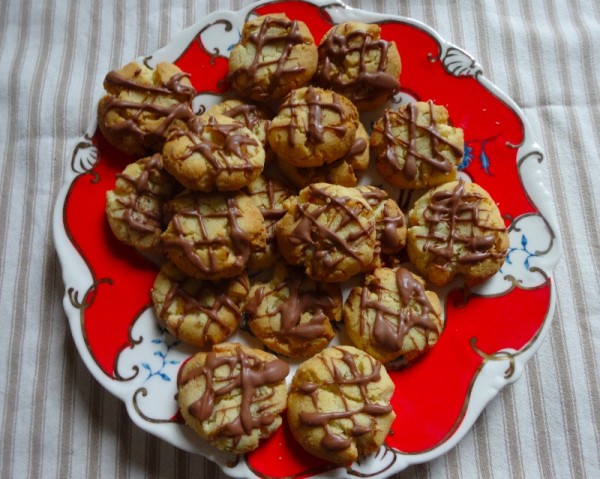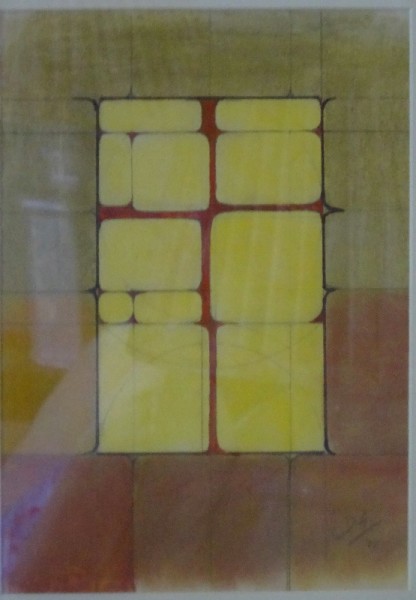
Study in pastel by David Addison
A couple of weeks ago I came to the end of the piece of yellow cotton we’ve been using for the patchwork altar frontal. A slightly panicky rummage revealed there was no more. Our local patchwork shop had what seemed a very good match, but ninety diamonds later, as I began joining the stars into constellations the yellow was too pale and anaemic. There was no chance of getting a repeat of the material now embedded in two thirds of the patchwork (Laura Ashley 1980s vintage) so before me were two alternatives. Either I could go along with the slightly less bright yellow of the latest cutting on the basis that in hand crafting such irregularities happen (kilim rugs look wonderful with shades changing mid weave with a suddenness and regularity that only adds to their beauty). Or, I could submit my latest piece of fabric to a bit of shade adjustment and try my luck with a packet of Dylon Machine Wash, Sunflower Yellow (which I did happen to have already).
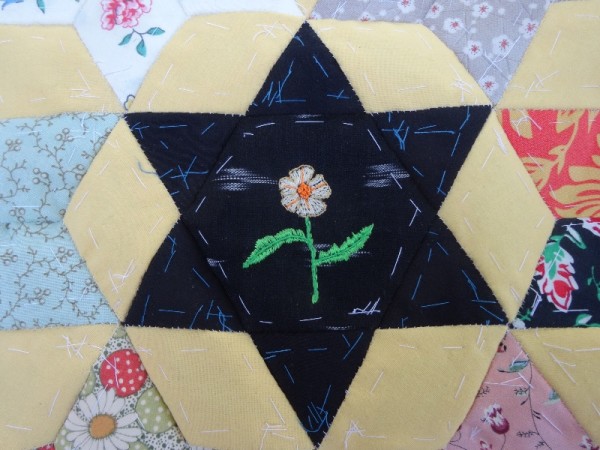
Yellow Anguillan flower by Joyce Hands
Several wash cycles of ever diminishing amounts of dye followed by washes with ever smaller squirts of liquid bleach later I felt I was getting somewhere – now the yellow just needed damping down with a more earthy tone. So it was with do or die desperation that I filled the sink up with a gallon of teabag tea into which I dropped the poor tortured fabric. Amazing to relate it is perfect! I defy anyone to detect a difference. My only hope now is that I haven’t degenerated the fabric to the point at which it disintegrates completely in a few year’s time…
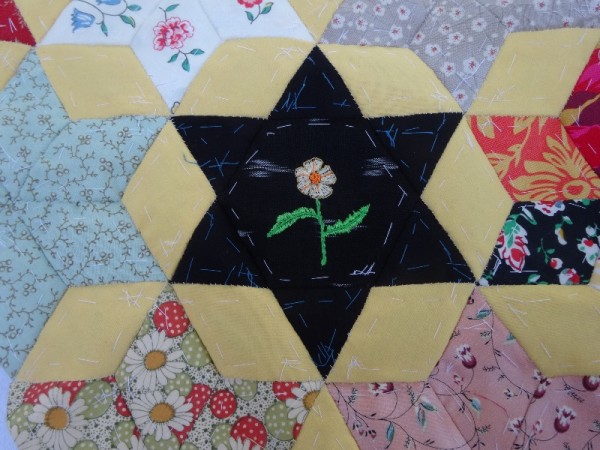
Yellow Anguillan flower by Joyce Hands
Which niggling worry got me thinking of Middlemarch. The great – but also most frustrating – thing about being a librarian is that you shelve all sorts of books you’d rather like to sit down and get your head into – immediately . As you can’t ever really do this (well, perhaps ever so occasionally in the depth of the vacations – if you’re lucky), I tended to stuff little notes hieroglyphic with shelf marks and personal shorthand about my person – never having any pockets, the usual place was tucked into my bra which meant at bed time the divestment of clothing also released a confetti of bits of paper rather as if I was nightly shedding a layer of skin. The vicar of course became accustomed to this and never batted an eye lid.
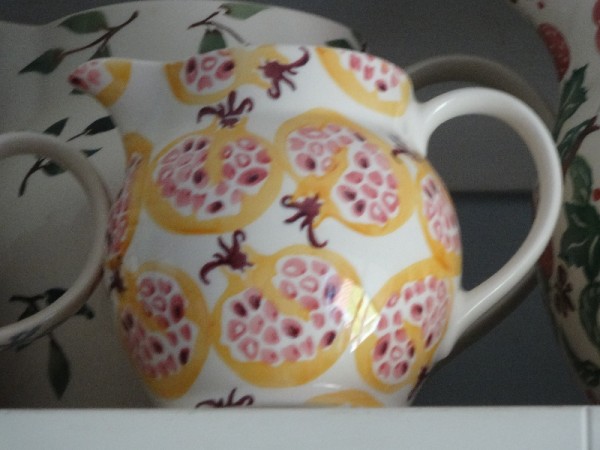
1 1/2 pt Pomegranate Bridgewater jug for Persephone Books
Well the truth is that you never get around to reading most of these books, but Middlemarch in the 21st century ed Karen Chase (OUP 2006) did get taken home and the essay by Gillian Beer : What’s not in Middlemarch was a revelation to me, detailing the book’s textile background and easily missed subtext. In the book itself (published in 1870; set in 1830) George Eliot dwells little on this background knowledge but Gillian Beer makes the point that readers contemporaneous with the book would have known about it and George Elliot takes this knowledge for granted in her novel.
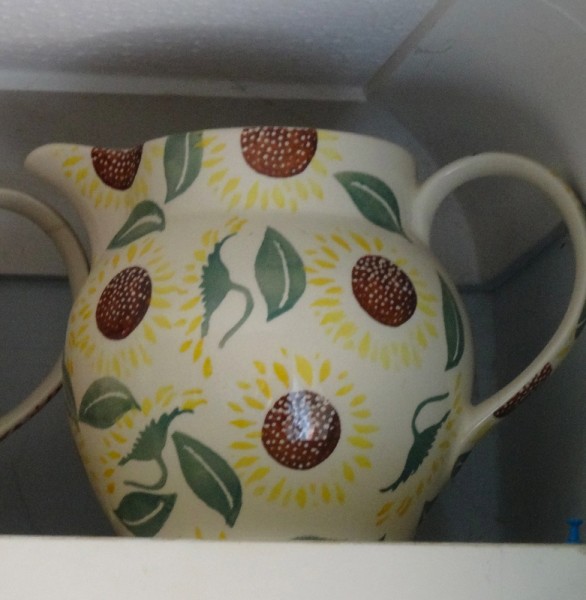
6 pt Bridgewater sunflower jug
“Fabric is the key metaphor of the novel” (Gillian Beer) and the weaving and dyeing imagery highlights the different levels of society, their interaction and their attendant health. Middlemarch itself is a centre for dyeing the fabric which is still made on domestic hand looms in the surrounding villages. Mrs Cadwallader regards Mr Vincy, the mayor and father of ‘hero’ Fred as, a good fellow yet she also describes him as “one of those (manufacturers) who suck the life out of the wretched handloom weavers in Tipton and Freshitt.” The cloth they produce is dyed using manganese, a new method which produces bright new colours but which rots the silk. Both Featherstone and Bulstrode have made money from manganese mines in the Midlands – and this is the money that may or may not go to Fred Vincey. Bulstrode is also involved in the great Plymdale dyeing house and is keen to keep the price of the hand loomed fabric as low as possible in order to maximize his profits. As the fine hand made fabric is rotted by the manganese dye, so is the lot of the hand loom workers degraded and demeaned. Manganese and managers rot silk literally and manual loomworkers metaphorically hand in hand. In 1830s Coventry (George Eliot’s home town) had 13,000 hand looms supporting 30,000 people. What’s not in Middlemarch are these silent workers who at this stage in the C19th have yet to find political expression.
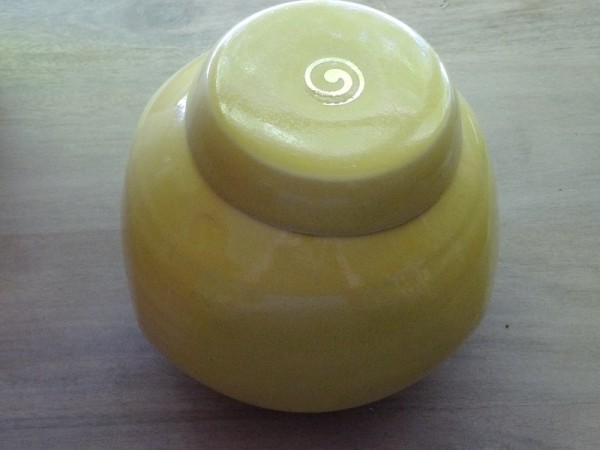
Lidded pot by Harriet Coleridge of Ewelme Pottery
Gillian Beer takes historical context one step further and looks at the physical form of the first publication. Middlemarch originally appeared in 8 paperback books each of which came with advertisements – ” in some cases the unironic juxtaposition of text and advertisement seems positively scandalous now”. Perhaps most ironical is the advert for Judson’s Simple Dyes which commends their use as clean, simple, economical and even an ideal as an amusing hobby activity for young ladies with too much time on their hands in line with sewing or knitting. Of course by 1870 when the book was published, new aniline dyes and chromolithography had superseded cruder dyes although we do now know that, though aniline dyes do not rot the fabric, they’re not in fact very good for the environment. Which brings me back to to where I began and to wondering about my own dyeing activity. I think I’ll just have to embrace the uncertainty and I’m thinking kilim rugs again. In 20 years time, should my dyeing not prove to be stable, somebody might even think the use of two different colours for the linking diamonds was all part of the original design. (Fingers crossed).
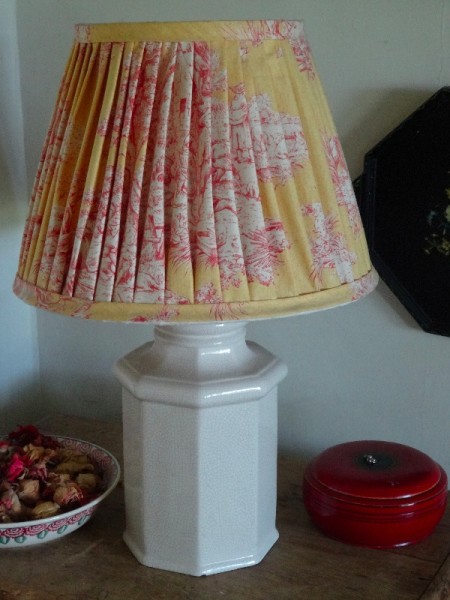
Yellow Zoffany toile lampshade
I love yellow – as my accompanying photographs illustrate.
Our Sewing Bee last Saturday was very successful. One brave soul took up the challenge to have a go at embroidering a flower and this appears above. She did it in Anguilla when she accompanied her husband for his work and she has no idea what it is. I like the idea it will be a nameless exotic in a patchwork field of local plants – but when it comes down to it, humans or plants, we’re probably all mongrels now.


